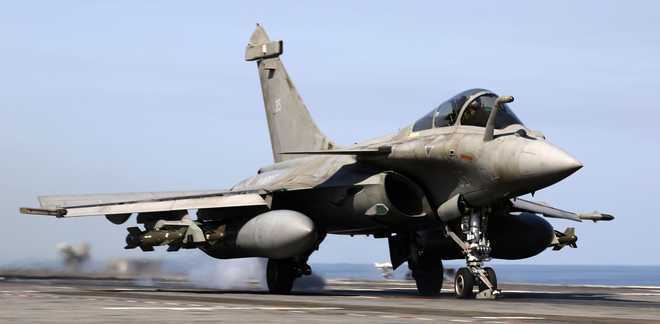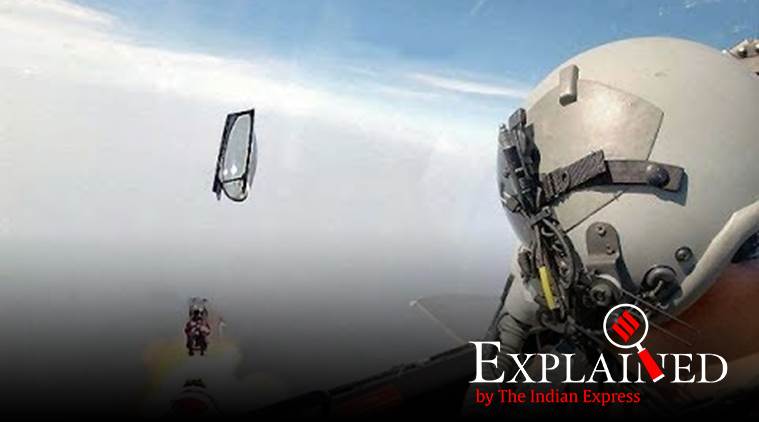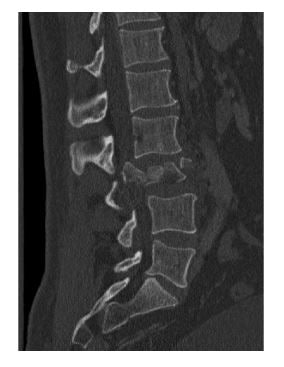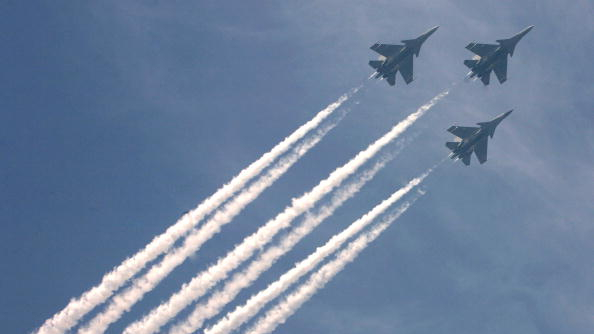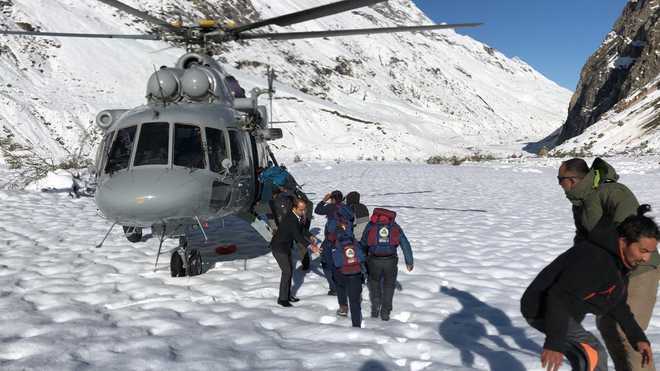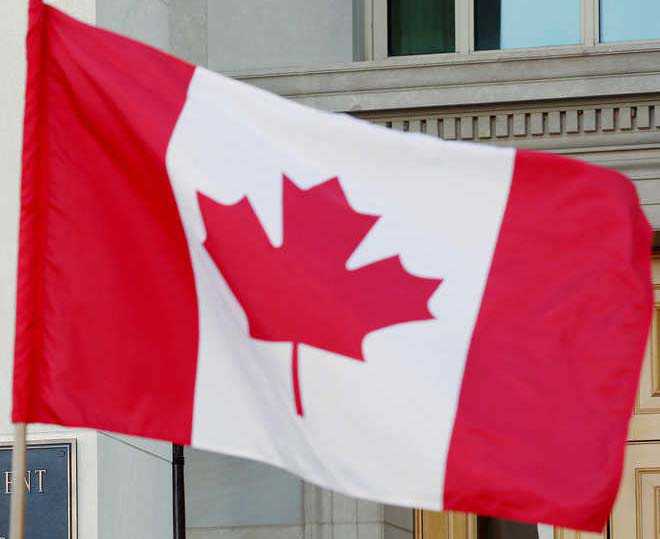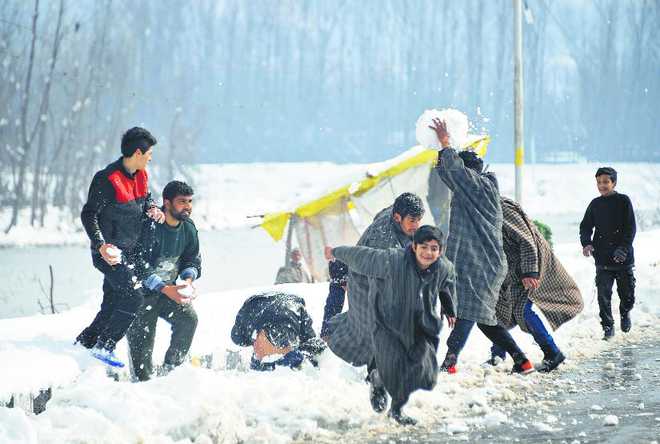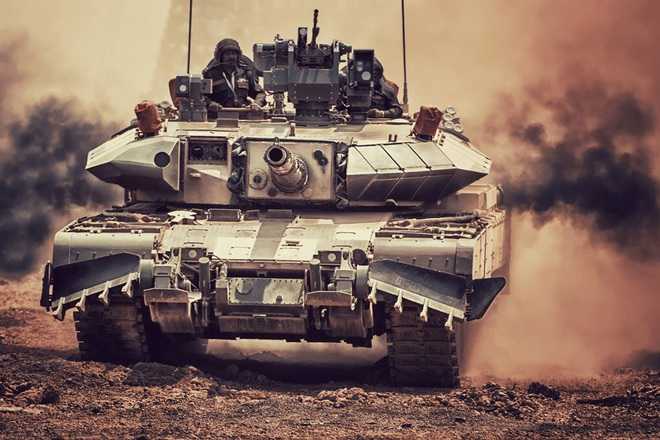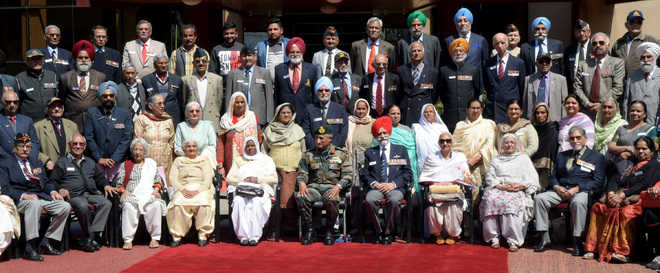
Participants at the national convention-cum-reunion of the War Decorated India in Chandimandir on Friday. TRIBUNE PHOTO: RAVI KUMAR
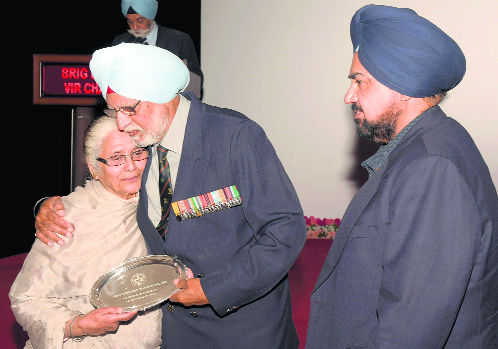
Maha Vir Chakra recipient the late Brig KS Chandpuri’s widow Surinder Kaur Chandpuri and son Hardip Chandpuri (right) being felicitated by Lt Gen GS Sihota (retd) during the national convention-cum-reunion of the War Decorated India in Chandimandir on Friday.
Tribune News Service
Chandigarh, March 15
The two-day national convention-cum-reunion of the War Decorated India (WDI) began at Chandimandir Military Station today. Gallantry award recipients from various parts of the country and next of kin of deceased war heroes attended the event.
Tributes were paid to the recently departed members of the association and war widows were honoured on the occasion. The election of the association president, nomination of executive committee members and issues relating to gallantry awardees and their welfare were part of the agenda. As tales of heroism flowed, old camaraderie was reignited.
The WDI was set up in 1991 to serve as a platform for strengthening camaraderie among the war heroes, further their cause and to provide them any assistance in times of need. Its members consist of recipients of gallantry awards won in the face of the enemy that include the Victoria Cross and Military Cross of the pre-Independence era and the Param Vir Chakra (PVC), Maha Vir Chakra and Vir Chakra, which were instituted post-Independence.
Chief of Staff, Western Command, Lt Gen PN Bali, addressed the gathering. He said the serving military men drew inspiration from the bravehearts who fought valiantly for the motherland and in the process many had laid down their lives.
The convention is held once in four years. The event this time was relatively a low-key affair with lesser number of participants as compared with past occasions as the number of war heroes has been dwindling over the years.
Among the Victoria Cross awardees, relatives of the Late Nb Sub Nand Singh of the Sikh Regiment, Late Sub Ram Sarup Singh of the Punjab Regiment and Late Badlu Singh of the Jat Lancers were felicitated. Dhano Devi, wife of Late Col Hoshiar Singh of the Grenadiers and daughter of Late Sub Joginder Singh of the Sikh Regiment, both of whom were decorated with the Param Vir Chakra, the nation’s highest gallantry award, was also honoured.
Col Hoshiar Singh was awarded the PVC for his actions while establishing a bridgehead across the Basantar river and repulsing enemy attacks in the Shakargarh Sector during the 1971 Indo-Pak War, while Sub Joginder Singh had led his troops in the face of the enemy despite being heavily outnumbered and defended his post near Bum La in the north-east until he was wounded and captured during the 1962 Sino-Indian War.
Sub Nand Singh’s son, Ripu Daman, who was attending the convention for the first time, pointed out that the names of Indian Victoria Cross recipients did not find a place in the newly constructed National War Memorial in the Capital.
Among those present was Lt Col (Dr) Virendra Sahi, a Vir Chakra recipient form the Battle of Laleali in the Chhamb Sector in December 1971. He had killed a Pakistani officer, who was physically much larger, in hand-to-hand combat after his weapon had jammed. Pakistani troops under the command of a major were able to gain a foothold on the forward tip of the Laleali post that resulted in a hand-to-hand combat between Indian and Pakistani soldiers. Sahi, who was also then a Major commanding an infantry company, had sent a handwritten citation to Pakistan, detailing his opponent’s actions.


